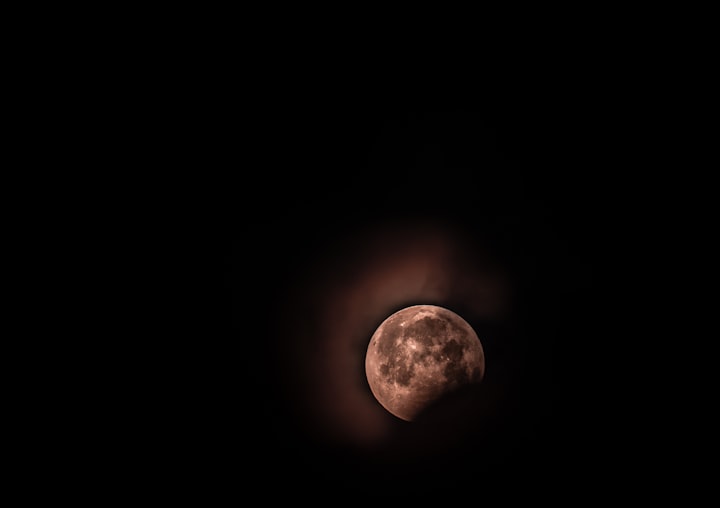Eclipsed: Embracing the Celestial Dance
A Poetic Ode to the Cosmic Spectacle and Its Enduring Wonder

Introduction:
In the vast theater of the cosmos, where stars twinkle like distant dreams and planets waltz in their orbits, there exists a spectacle that transcends the mundane rhythms of celestial motion. It is a dance of shadows and light, an intricate interplay between the sun, the moon, and the Earth—an eclipse. With an ethereal grace, these cosmic phenomena captivate our imaginations and remind us of the sublime beauty and wonder of the universe.
As inhabitants of this pale blue dot suspended in the vastness of space, we are privileged witnesses to the cosmic ballet of eclipses. Whether it be the majestic sweep of a total solar eclipse, where day turns to night and the corona of the sun blazes forth in a breathtaking display, or the delicate crescent of a partial lunar eclipse, casting a mysterious glow upon the moon’s surface, each eclipse is a testament to the awe-inspiring intricacies of our solar system.
The phenomenon of an eclipse occurs when the paths of the sun, the moon, and the Earth converge in perfect alignment, casting shadows upon one another in a celestial pas de trois. During a solar eclipse, the moon passes between the Earth and the sun, casting its shadow upon the Earth and obscuring the sun’s brilliant light. Meanwhile, during a lunar eclipse, the Earth moves between the sun and the moon, casting its shadow upon the lunar surface and painting it with hues of crimson and copper.
The allure of eclipses has captivated human imagination for millennia, inspiring myths, legends, and cultural traditions across the globe. Ancient civilizations gazed upon the darkening sky with a mixture of awe and trepidation, interpreting eclipses as omens of divine displeasure or cosmic battles between celestial deities. In cultures as diverse as the ancient Egyptians, the Maya, and the Vikings, eclipses held profound symbolic significance, marking the intersection of the sacred and the celestial.
Even in modern times, eclipses continue to inspire wonder and fascination. Millions of people from around the world gather to witness these celestial spectacles, traveling to remote corners of the globe or tuning in to live streams and broadcasts to experience the magic of an eclipse. For those fortunate enough to witness a total solar eclipse in person, the experience is nothing short of transformative—a moment of awe and reverence in the face of the sublime beauty of the cosmos.
But eclipses are more than just celestial curiosities—they are also invaluable opportunities for scientific discovery and exploration. Astronomers and researchers study eclipses to unlock the secrets of the sun, the moon, and the Earth, probing the mysteries of solar physics, lunar geology, and atmospheric science. During a total solar eclipse, scientists can observe the sun’s corona—the outermost layer of its atmosphere—with unprecedented clarity, revealing insights into its structure, composition, and behavior. Lunar eclipses, on the other hand, provide astronomers with a unique opportunity to study the Earth’s atmosphere and climate, as the reddish hue of the moon’s surface offers clues about the composition of our planet’s air.
In addition to their scientific significance, eclipses also hold a profound cultural and spiritual significance for many people around the world. In ancient cultures, eclipses were often viewed as powerful symbols of transformation, renewal, and rebirth, signaling the cyclical rhythms of nature and the eternal dance of light and darkness. Today, eclipses continue to inspire awe and wonder, serving as reminders of the interconnectedness of all things and the vastness of the cosmos.
As we gaze up at the darkening sky during an eclipse, we are reminded of our place in the universe—a tiny speck of dust in the grand cosmic tapestry. Yet, in that fleeting moment of celestial alignment, we are also filled with a sense of wonder and awe, as we witness the sublime beauty and majesty of the cosmos unfolding before our eyes. In the dance of shadows and light, we find a reflection of our own humanity—a reminder of the timeless quest for meaning and understanding in the face of the infinite expanse of space and time.
So let us embrace the celestial dance of eclipses with open hearts and open minds, for in their fleeting beauty lies the promise of discovery, wonder, and transcendence. As the sun, the moon, and the Earth converge in perfect harmony, let us pause to marvel at the beauty of the universe and to reflect upon our place within it. For in the shadows of an eclipse, we find not darkness, but the radiant glow of cosmic truth shining brightly for all who have eyes to see.
About the Creator
Ssekatawa Isah
Greetings, I'm Ssekatawa Isah, a master storyteller hailing from Uganda. Through my tales, I paint vivid landscapes of our vibrant culture and the mesmerizing beauty of our land.






Comments
There are no comments for this story
Be the first to respond and start the conversation.